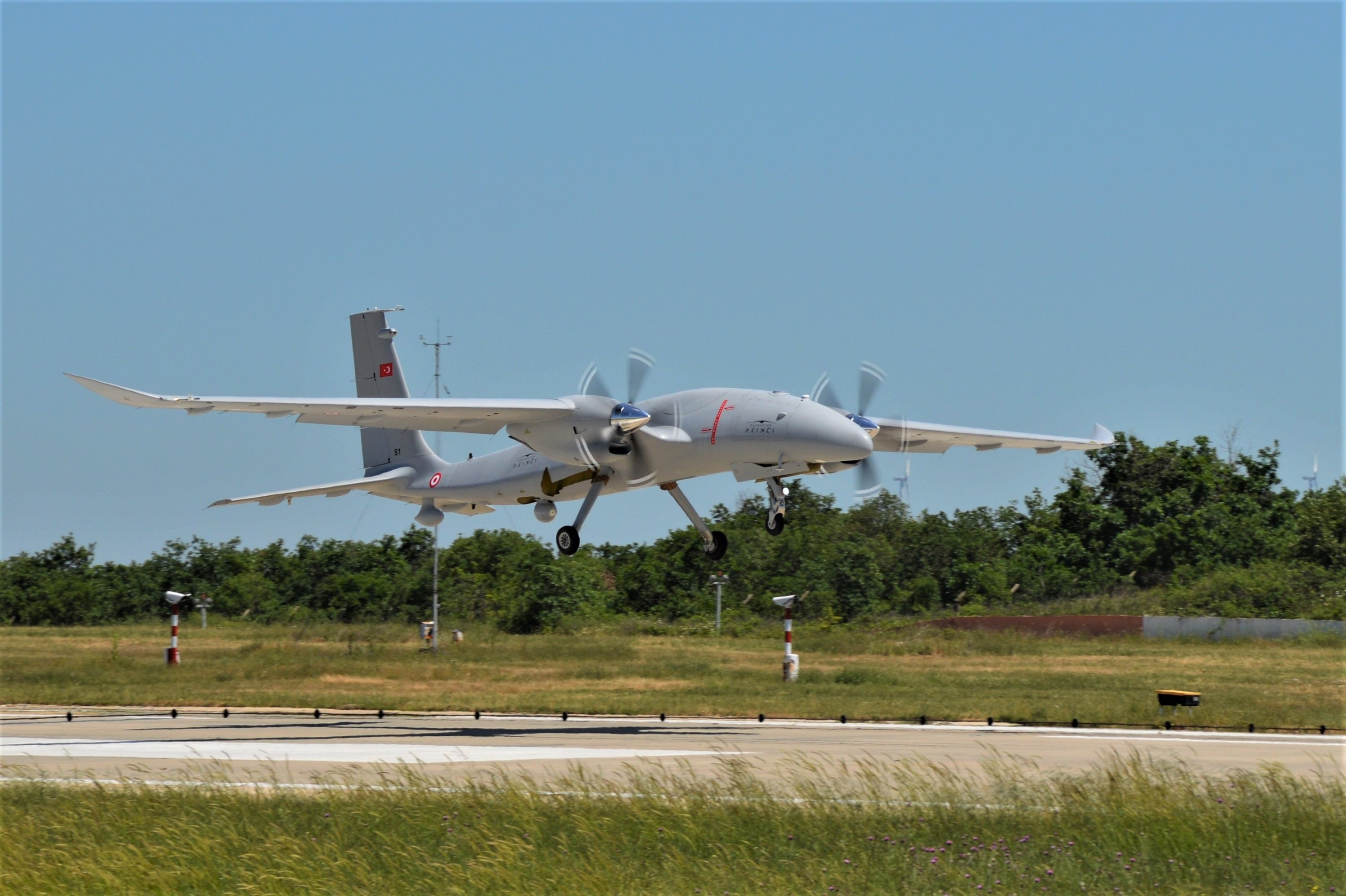The first mass-produced version of Turkey's state-of-the-art unmanned combat aerial vehicle (UCAV) Bayrar Akinci S-1 passed its initial flight test on May 19, Daily Sabah reports. The information regarding the test flight was shared by manufacturing company Baykar’s Chief Technology Officer (CTO) Selçuk Bayraktar on Twitter.
Follow Air Recognition on Google News at this link
 The first mass-produced version of Turkey's unmanned combat aerial vehicle (UCAV) Baykar Akinci S-1, passed its initial flight test on May 19 (Picture source: Baykar)
The first mass-produced version of Turkey's unmanned combat aerial vehicle (UCAV) Baykar Akinci S-1, passed its initial flight test on May 19 (Picture source: Baykar)
Bayraktar Akıncı is a High-Altitude Long-Endurance (HALE) Unmanned Combat Aerial Vehicle (UCAV) manufactured by the Turkish technology company Baykar. Currently, the project is in the mass production phase.
The drone has a 5.5 tons Maximum Takeoff Weight (MTOW) while 1,350kg (2,976 pounds) of this is composed of a payload (400 kg internal and 950 kg external). Akıncı is equipped with two turboprop engines having has two different types of thrust capabilities: 450 or 750 hp. The final edition of the aircraft is expected to be equipped with electronic support systems, dual satellite communication systems, air-to-air radar, collision avoidance radar and synthetic aperture radar.
First pictures of the UAV hit media reports in June 2018. It was unveiled to the public during Teknofest Aviation, Space and Technology Festival in September 2019. According to SSB, the Turkish Presidency of Defense Industries, the first fully operational Akıncı will be delivered to the Turkish Air Force in 2021.
The Akıncı UCAV came following Baykar’s success with the Bayraktar TB2 UCAV that was also designed and manufactured in Turkey, and is in service with the Turkish Armed Forces. The combat drone was exported to Ukraine, Qatar and Azerbaijan as well.
Akıncı is longer and wider than the Bayraktar TB2 and is dedicated to strategic tasks. Akıncı includes nearly 100 computer systems.
The unmanned aircraft platform, which has a 20-meter (65-foot) wingspan with its unique twisted-wing structure, will also provide high levels of flight safety thanks to its fully automatic flight control and triple-redundant autopilot system.
Akıncı will be the first UAV capable of launching an ALCM (Air-Launched Cruise Missile). Other ammunitions expected to be used on the Akıncı include Roketsan’s Cirit laser-guided missile, the laser-guided long-range anti-tank missile (L-UMTAS), Bozok munitions, the within visual range air-to-air missile (WVRAAM), the Bozdoğan and beyond visual range air-to-air missile (BVRAAM) and the Gökdoğan standoff missiles (SOM) developed with resources from the Scientific and Technological Research Council of Turkey’s (TÜBITAK) Defense Industries Research and Development Institute (SAGE). It will also be capable of deploying low-drag general-purpose bombs such as the MK-81, MK-82 and MK-83. On April 22, the cutting-edge drone successfully passed its first live-fire test using the latest smart munitions domestically developed by leading defense contractor Roketsan, namely the MAM-T, MAM-C and MAM-L smart micro munitions (MAM).
The state-of-the-art UCAV – in addition to carrying critical loads such as an Electro-Optical/Infrared (EO/IR) camera, the AESA radar produced by Turkish defense giant Aselsan that will be integrated into the drone, the Beyond Line of Sight (BLOS) satellite connection and electronic support systems – will also have advanced artificial intelligence (AI) features that will allow it to collect information by recording the data it receives from sensors and cameras on the aircraft.
The AI system, which will be able to detect the angle of roll, stand up and orientation of the aircraft without the need for any external sensor or Global Positioning System, will provide environmental awareness by using geographic information. The advanced AI system will have the ability to make decisions by processing the data it obtains. It can detect targets that cannot be detected by human eyes, enabling the Bayraktar Akıncı to be used more effectively.
















